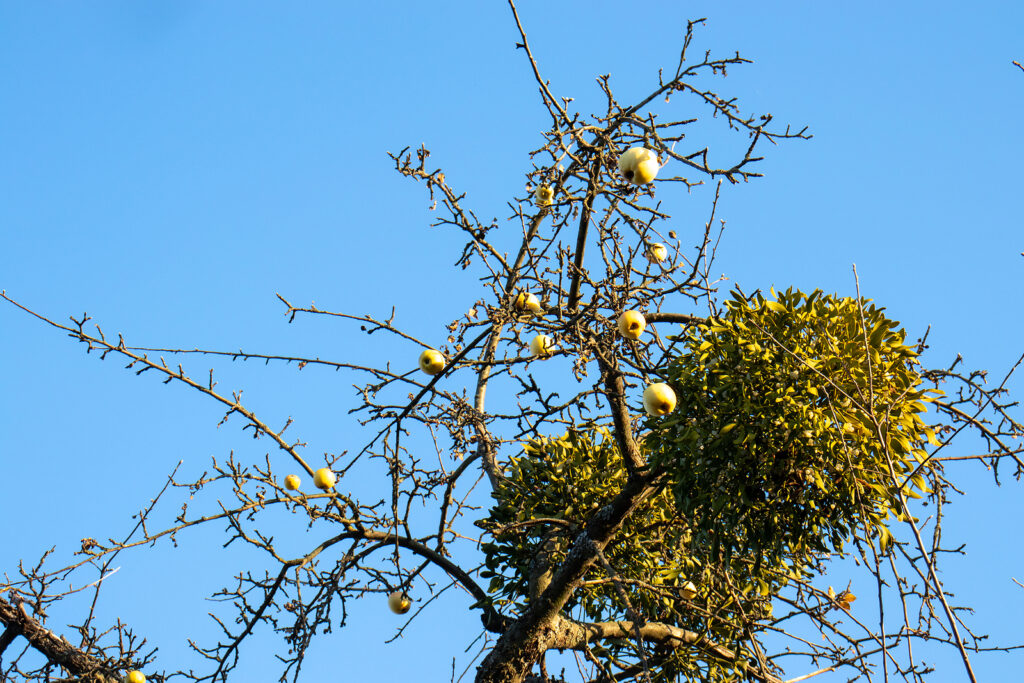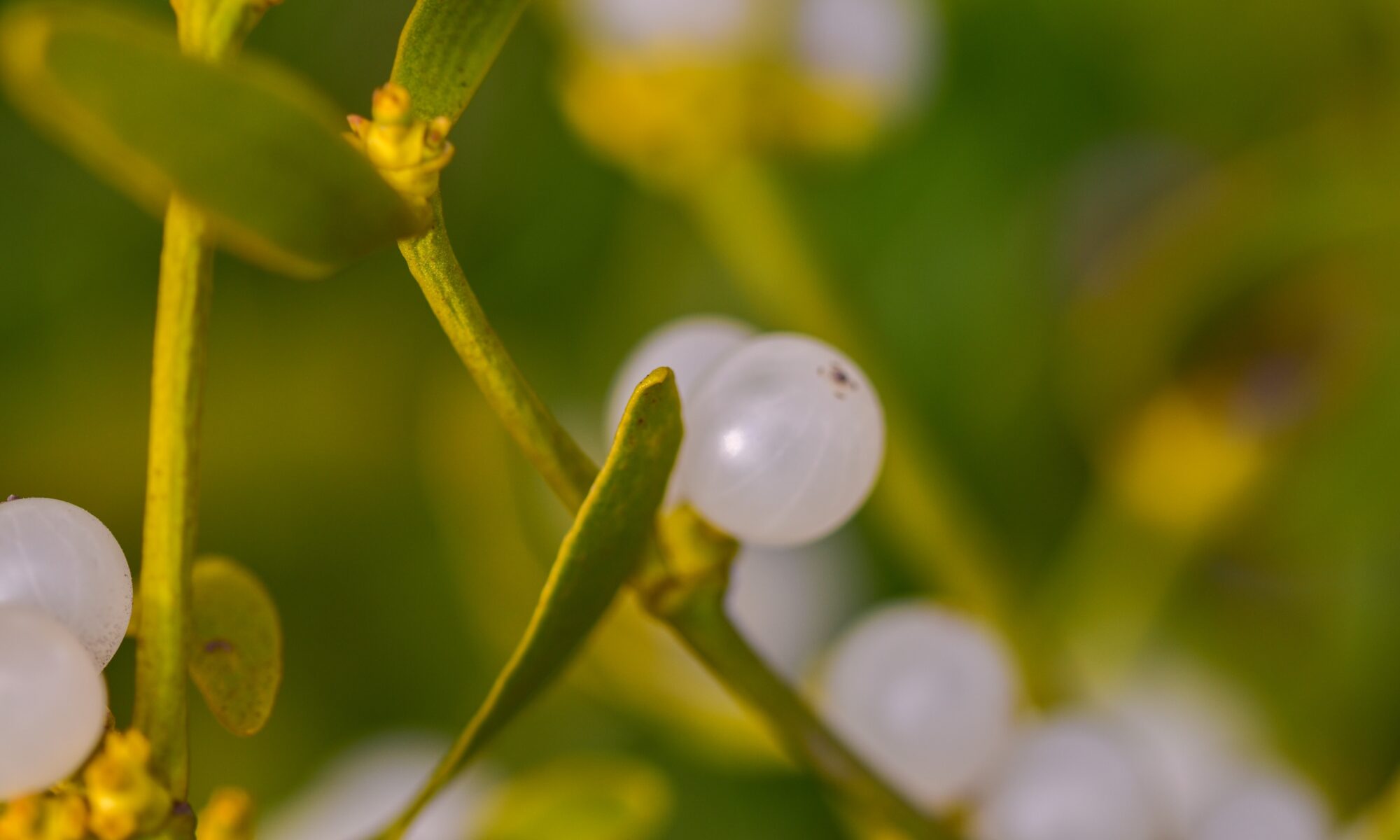Are you wondering how mistletoe grows? If you think you’ve spotted it on your property, it’s best to have a trained arborist inspect your trees. Why? Well, mistletoe is actually a parasitic plant that grows and feeds on the branches of trees, so it can do a lot of damage!
Read on to learn more about how mistletoe grows and other interesting facts about this strange plant we’ve come to associate with holiday kisses.
How to Recognize Mistletoe in Your Trees
It’s easiest to spot this festive tree vampire in the winter when there are fewer leaves to conceal its presence. It looks like a green bundle with rounded leaves and white berries. In fact, mistletoe is an evergreen shrub that steals nutrients and water from host trees. Pay special attention if you have oak, maple or other hardwoods in your yard, as well as pine trees and various other conifers.

Blame it on the Birds
Birds are responsible for spreading mistletoe far and wide. The plant produces beautiful, white berries that are poisonous to humans, but a prized snack for our avian friends. The birds eat the berries and excrete the seeds on tree branches, where the mistletoe takes root and begins to grow, tapping into the tree’s branches.
What’s in a Name?
Mistletoe gets its rather unflattering name from the Anglo-Saxon word misteltan, which means “dung twig.” The plant is also known as mislin-bush, kiss-and-go, and churchman’s greeting. The evergreen was actually venerated in Ancient Greece as a symbol of male virility, and can grow on over a hundred tree species.
What’s With All the Kissing?
Mistletoe has long been associated with winter solstice celebrations. Kissing under a sprig of mistletoe was supposed to bring love and luck, and maybe even marriage. Traditionally, after each kiss, a berry was removed until none were left.
How Mistletoe Grows and Harms Trees
Because mistletoe is a parasitic plant that inserts its roots into the branches of your trees, it’s best to have it professionally removed as soon as possible. The more mistletoe spreads, the harder it becomes to save infected trees. Mistletoe is harmful to the tree it is growing on, as it steals water and nutrients from the host tree. In addition, mistletoe can also harbor insect pests and diseases. If you find mistletoe growing on a tree, it is best to remove it to prevent the infection from spreading. Mistletoe can be especially damaging to trees during droughts.
All in all, mistletoe can be a serious threat to the health of your trees, so it’s important to have it removed by a professional arborist. Mistletoe can cause damage to the host tree by stunting its growth, too, weakening its structure, and even causing premature death. If you attempt to remove mistletoe yourself, you could cause more harm, despite your good intentions. It can also be dangerous work, since mistletoe can spread high into a tree’s branches, not to mention branches can be much heavier than they appear.
Mistletoe Removal
Now that you know how mistletoe grows, be sure to check out your yard for signs it’s stealing nutrients from your trees.
To schedule a consultation with an experienced arborist, you can reach us at 925-233-6877 or send an email by clicking here.
 Bringing Sexy Back Into Your Yards
Bringing Sexy Back Into Your Yards 
